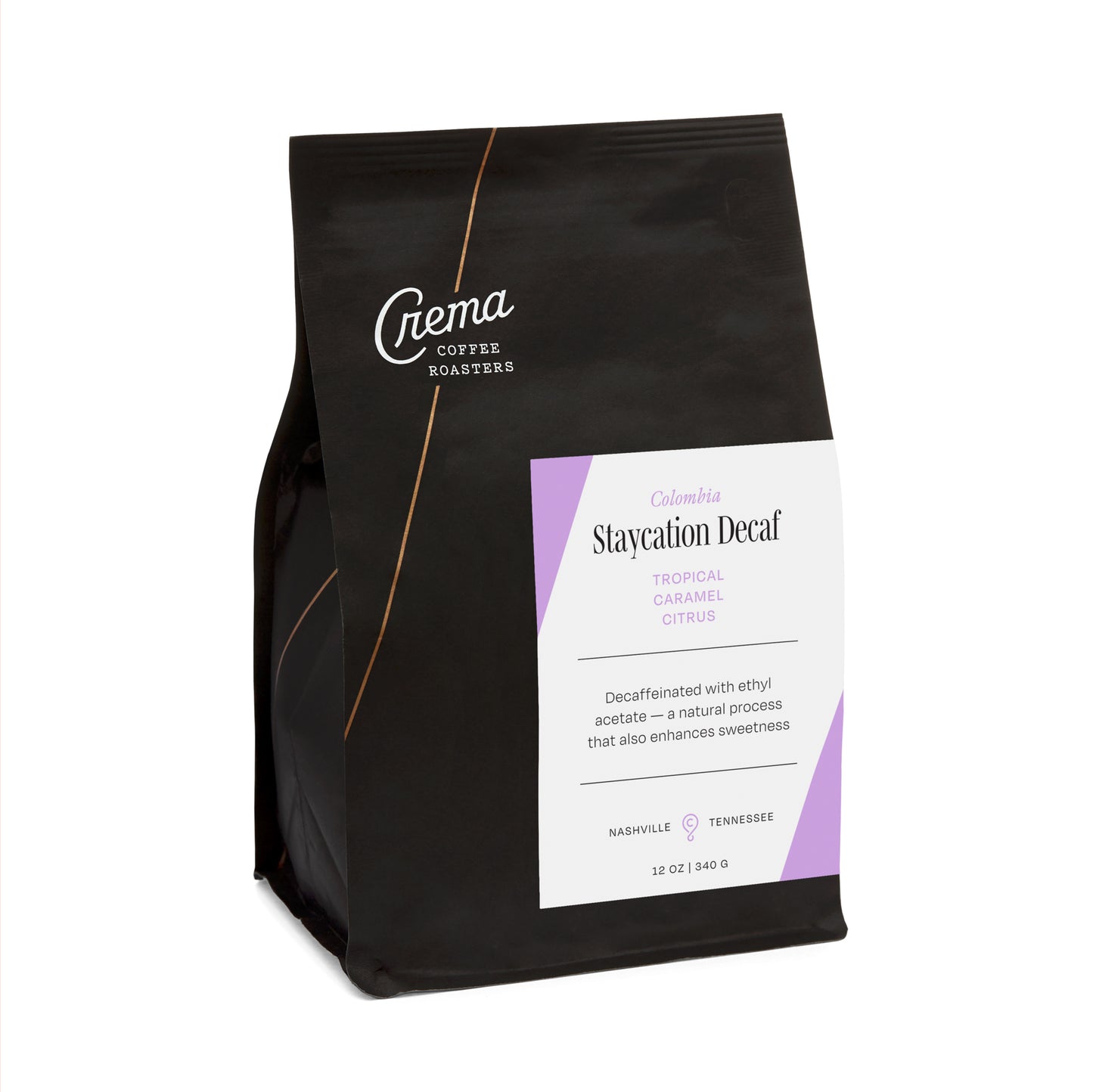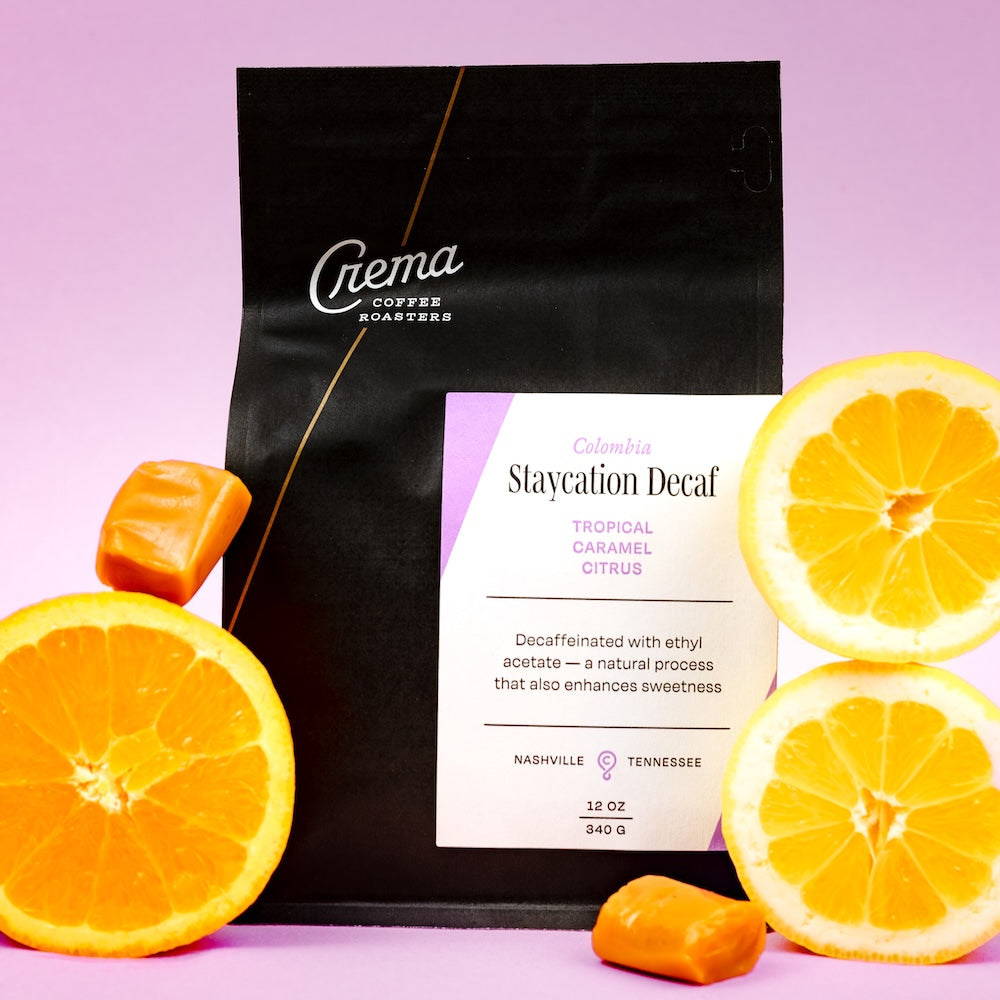CREMA’S TRIP TO COFFEE FARMS IN COSTA RICA
At Crema, our partnerships with the people in these countries are essential to our ethos. We rely on these expert farmers, processors and pickers to bring you the tasty coffees we offer. As you may have heard us say before, we are a small part of the larger journey of coffee from seed to cup.
As part of our benefits and well-being plan, Crema employees are eligible for a trip to origin after 3 years with the company. After a two-year origin trip hiatus (Hmm, I wonder why?), a few of our own ventured down to the land of ‘Pura Vida’ a few weeks ago and visited our friends and Costa Rican partners at Exclusive Coffees.
We got the inside scoop of this year’s journey and we wanted to share our thoughts, feelings and learnings with YOU. Because, without you, there is no Crema and no one to share in the beautiful experience of coffee!
Without coffee-producing countries, there is no coffee.
What was your most memorable experience from the trip?
Rachel (COO, Founder & Chief Dishwasher): I would say seeing the clouds lift out of the valley at Los Tucanes and the constant misting that fell from the sky at Sumava farm in the West Valley. There’s always this constant flow of air, warmth and sometimes moisture that is hard to describe. Also, each region and valley is so different from each other — everything from green and lush to dry and sunny.
Adria (Duke St Barista): Riding in the back of the pickup truck at Los Tucanes and looking out over the valley full of terraced coffee trees. The landscape, the moving clouds and warm sun and blue sky peeking through were just so full of life.
Maddie (General Manager & Cardboard Crusher): The Sumava farm was like taking the biggest exhale of the last 2 years. I fell in love with the mountain-scapes, warm air, and pine trees while roaming the stunning farm. Our guide for the day, Esteban, pulled off a lemon hybrid from a tree and peeled it for us. We enjoyed this unique fruit while looking over the coffee plants.
Victoria (Hermitage Ave Barista, Photographer & Social Media Superstar): Visiting Los Tucanes and eating my first coffee cherry, seeing the incredible landscape that this coffee is grown in, and crossing paths with people who were there working to harvest the coffee. It was a humbling reminder that each cup of coffee we drink, each shot of espresso we pull is only possible because of the dedication, brilliance and physical labor of the people working on the farm.

What was the best thing you ate or drank?
Rachel: I’d have to say eating the pacamara [coffee plant varietal] mucilage at Sumava farm or cupping this wildly tasty 90+ scoring Geisha* from Los Tucanes farm and tasted like straight up strawberries and cream.
Adria: The cappuccino from Don Cayito Coffee Shop. It was the best cappuccino I’ve had made for me in a while, and to sip it while overlooking the Dota Valley at sunset was just so dreamy.
Maddie: Drinking coffee that Francisco made upon arriving at Sumava while we enjoyed the sun, breeze, and overlooked the coffee drying on beds.
Victoria: Everything we ate and drank on this trip was such a delight but I keep coming back to breakfast at Cecelia’s — a little place we stayed on our second night. Cecelia was up early that morning to prepare us eggs, toast, avocados, an abundance of fresh fruit, caramelized plantains, blackberry jam and papaya juice she had made herself. And the chocolate cake for dessert…
* Similar to wine, coffee is scored on a scale of 1-100. In order for a coffee to be denoted ‘specialty’ it has to score at least an 80.. Coffees that score above 90 are typically thought of are exceptionally clean, complex and sweet and often come with a hefty price tag. Crema typically buys coffees in the 85-89 range with the occasional 90+ coffee. Learn more here.

Describe something beautiful you saw.
Rachel: Where to begin?
Adria: I have a friend who likes to say that beauty is a feeling, and I felt beauty almost constantly the entire time we were there. Whether it was an experience of incredible hospitality, the landscape, the climate, the food and drink or enjoying new friends; it all felt beautiful.
Maddie: Bonding over Kendrick Lamar in the car with Davion was such a fun experience. Also, the clouds over Los Tucanes were so ethereal and breathtaking.
Victoria: This is an impossible question! The landscapes of the coffee farms; the hospitality of every single person we crossed paths with; the home of a coffee farmer’s mom that was so beautifully simple and inviting; Pablo and Josue walking us through every step of processing at the Don Mayo Mill; Cecelia’s breakfast (yes, it deserves to be mentioned twice!); the view from the balcony of the Don Cayito coffee shop.

Costa Rica is known for their innovative processing techniques. Any new coffee processes/trends that the producers talked about?
Rachel: One newer thing I’ve noticed is the term ‘cherry reposado’. Producers are trying new ways to “rest” the coffee in the cherry from 1-7 days then “honey” process them. It’s a combination of natural, in a sense, but then pulping still happens. What’s mind boggling is that within each category of ‘honeys’ and ‘naturals’, there are SO many different applications or approaches to the ideas.
Adria: Pretty much what Rachel said.
Maddie: Retweet on what Rachel said. Learning about ‘cherry reposado’ from Esteban and Francisco took the cake!
Victoria: What Rachel said!

What are some ways the producers practice sustainability in their farms/mills?
Rachel: First, everyone seems to be cognizant of water usage, not using too much to begin with because water disposal is carefully regulated and can kill some trees and natural plants. We saw a few different ways the water was “held” in pools and then later used on certain grass that can withstand the ‘waste’ water. These grasses would then be cut and used for cattle. Nothing goes to waste; the pulp is carefully reused as compost and fertilizer for future crops.
Adria: Besides what Rachel mentioned about water usage, it struck me how much the natural environment is used in processing. There is certainly a need for electricity and gas for running some machinery. Occasionally, when there is an abundance of coffee to be processed, machine dryers need to be used, but so much of the natural climate is in use, too. Heat from the sun is used for the honey and natural processing. The coffee on the drying beds is turned over continually by hand as well. There is just a great deal of natural energy that goes into the process, whether from the atmosphere or from human resources.
Maddie: Overall, there is very little reliance on utilities at the farm. As Adria said, natural climate is the biggest “utility”! The crops are reliant on rain water. All of the farms we visited do not use irrigation systems. During processing, water is used to wash coffee. Even then, the water can be reused throughout the day! I think about growing crops in the U.S. and how reliant we are on irrigation systems. In Costa Rica, the microclimates provide a fantastic amount of natural resources for the farms.
Victoria: It seems like each farm or mill we visited, they were always talking about how they were able to reuse water. I thought it was very cool to learn that in general, Costa Rica shies away from certain coffee processing methods that use a lot of water and create waste.

What’s something about the coffee industry that you think about differently now?
Rachel: I always come back feeling humbled and, honestly, spoiled by all the great coffee and food we have access to on a daily basis. I always think of the future generations of coffee producers: what and who will they be? It’s been wild to see some of our producers’ children grow into teenagers and adults and study business or agronomy because they have a love for growing and producing coffee and/or want to work in the logistics or export side of the trade. I’m grateful to have also seen some farms year after year continue to grow in their efforts of not only growing and producing great green coffee, but also roasting and serving their specialty coffee in their own cafes in Costa Rica. Typically most great coffee is exported, but it’s time that the coffees they grow are celebrated and consumed in the places they are produced.
Adria: Even before the trip, I thought a lot about the future of coffee as regards the changing climate and less predictable weather patterns. The coffee industry and consumers often take for granted that coffee will just always be here. That possible reality was really brought into focus for me on this trip. Seeing the whole process, understanding the climate, elevation and habitat needs and meeting the producers made it much more clear that caffeine withdrawal for the masses would just be the tip of the iceberg. If things change too much, entire economies could collapse. I wonder if there could be a shift within the industry toward marketing a more intentional and conscious consumption rather than as a need, ‘drug’, a treat or entertainment.
Maddie: After visiting our farms in Costa Rica, it brought my attention to our global economy. Global access has created opportunities and products, but at the cost of being completely separated from the source. There's always pros and cons. I hope moving forward we can find ways to connect people to the coffee plant and its journey. Can we create conscious consumerism?

Has the way you viewed coffee changed? How?
Rachel: It’s constantly changing. I always waffle between this is my “job” to this is my “life’s work” — truly, the thing I love and enjoy the most and could do over and over again. Trips like this remind me of my place in this story, how we tell it, why we tell it, and why we want to continue doing all of the above. The cafe life can be a hurried, busy, and sometimes overwhelming space to be and work in. I’m grateful for all of our customers, but there are times I want to slow it all down and take in the beauty of the thing we do and how we serve it.
Adria: I’ve worked in coffee off and on for almost 20 years. This is the first time I have been able to visit an origin country, see the process and meet the producers. For me this trip brought a sensory, experiential knowledge to everything I’ve been learning and teaching to others for those 20 years. I picked coffee cherries right off the tree and popped them in my mouth. I witnessed the pickers finishing up this year’s harvest. I felt the sun, smelled the air and tasted the freshest cups of coffee I’ve ever had. What has changed in how I view coffee is that I now know from experience and that experience lives in me. I don’t see myself ever being able to drink another cup without an embodied awareness of all it took to get to me.
Maddie: I learned immensely from our producers and the common thread through everyone on the farms was that they are working out of joy. Coffee is a labor of love and a way of life not just a job. It fuels them (not just due to the caffeine)!

What would you want our customers, or coffee drinkers in general, to know about coffee?
Rachel: I would say that each part of the process —picking, transportation, wet milling and dry milling — all play a VERY important role in coffee quality. Green coffee quality is something we often take for granted and how much work goes into each step. Also, picking cherries is very labor intensive, requiring much skill and physical labor. We should value every little seed :)
Adria: For all the years I’ve been in this industry, I’ve always wanted coffee drinkers to understand and appreciate the incredible symphony that the process of getting coffee into their cup is. It’s nearly a miracle, and Crema plays the final part. Without our growers, pickers, processors and importers, we have nothing to work with. Particularly, I want people to know that all those beans are hand-picked by highly trained people and often on difficult terrain. The simple act of brewing a cup of coffee actually takes an immense amount of physical human resources. In my ideal world, everyone would take a moment before they take that first sip and acknowledge this truth. And maybe again after that second sip.
Maddie: The comparison between wine and coffee is not something new, but I would love coffee consumers to think about a time when they visited a winery. I’m sure they gained a great appreciation for wine afterwards. With coffee, there are even more steps to get coffee into our cups. Like the ladies said before me, each and every step of harvesting, drying, processing, exporting/importing, roasting and brewing, is labor intensive and precise. Each person involved in that process has the ability to negatively impact the coffee. We each try to take the least bit of quality away from the product and honor those before us in the chain.
Victoria: Echoing what the others have said, I wish more people were more aware of all the steps and people it takes to get coffee to us here at Crema. There is an unimaginable amount of hard, physical labor and attention to detail that goes into growing, harvesting, and processing coffee well and, as Adria said, it is truly a miracle that we even get to experience and enjoy these coffees at all. I hope that moving forward, I can help in a small way to cultivate a mindset around coffee that helps to honor the people who make it possible for us to drink it.


← Older post Newer post →







